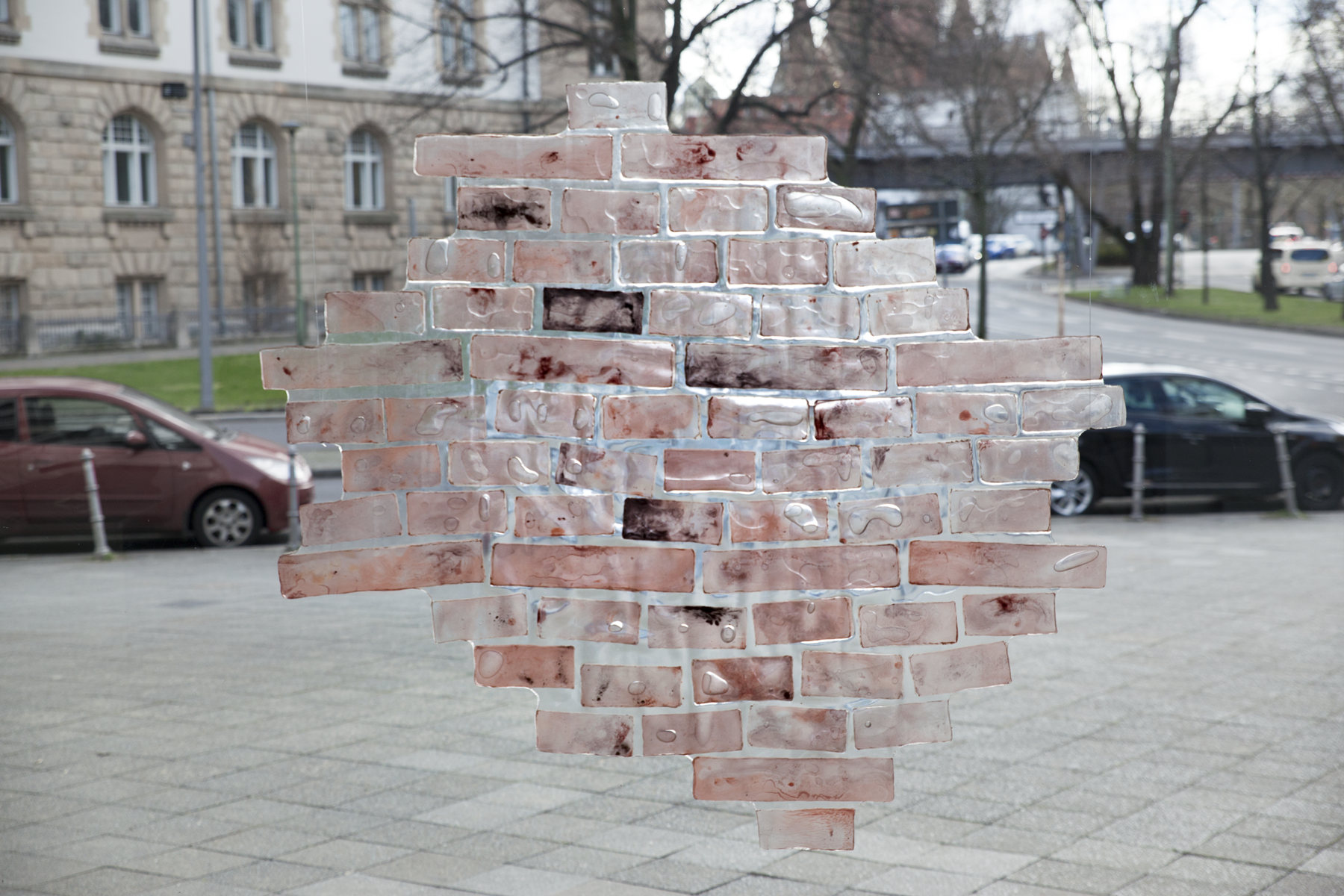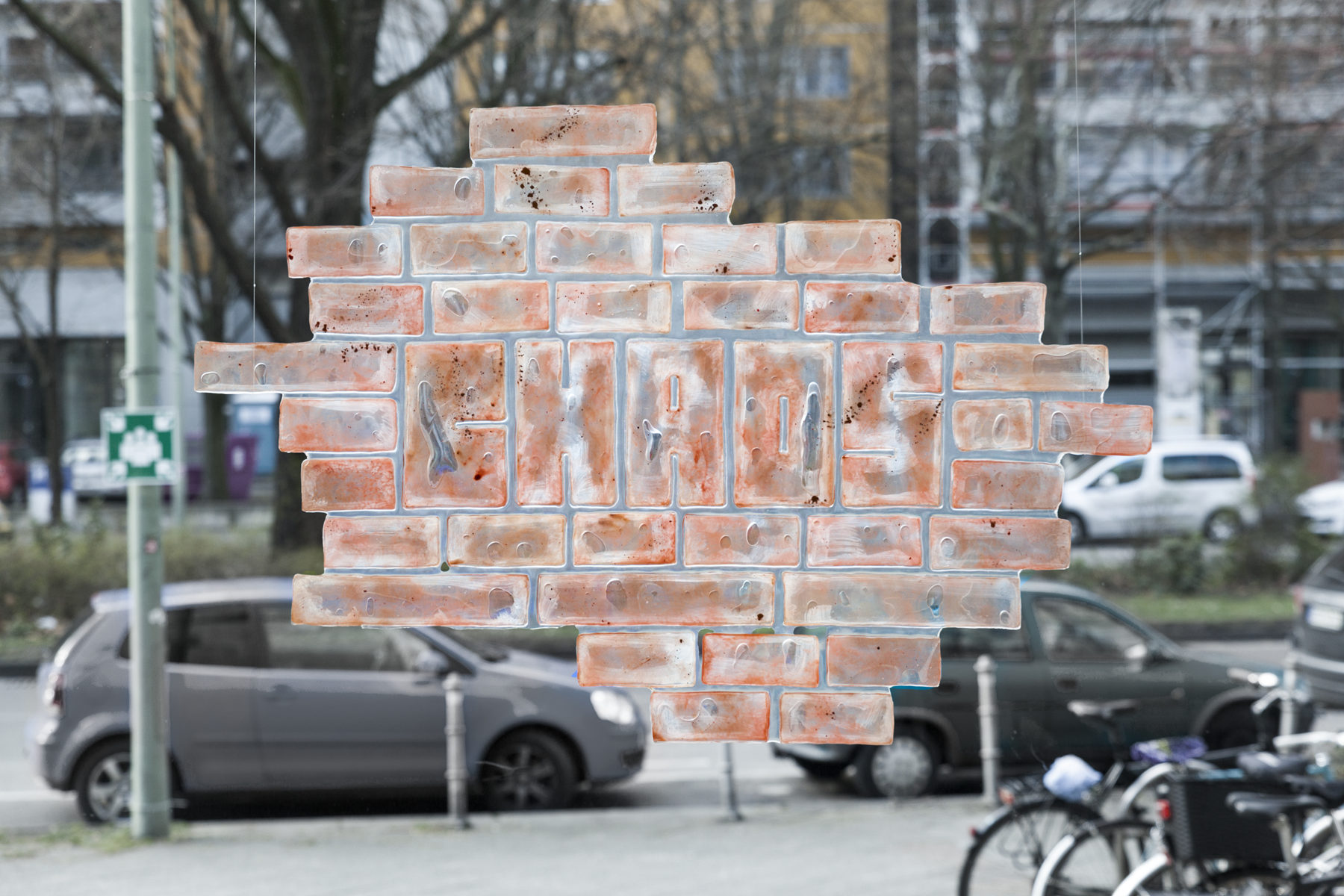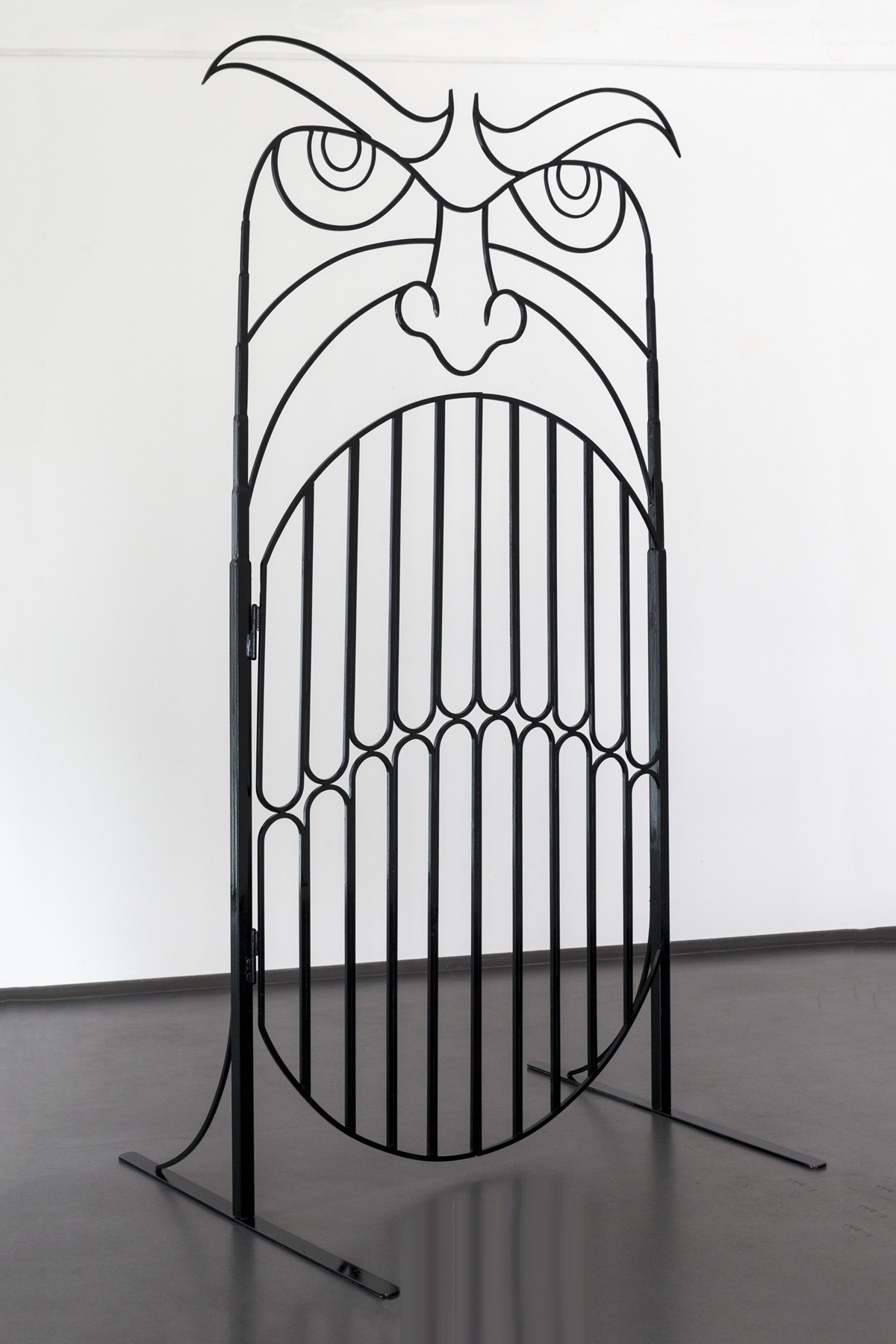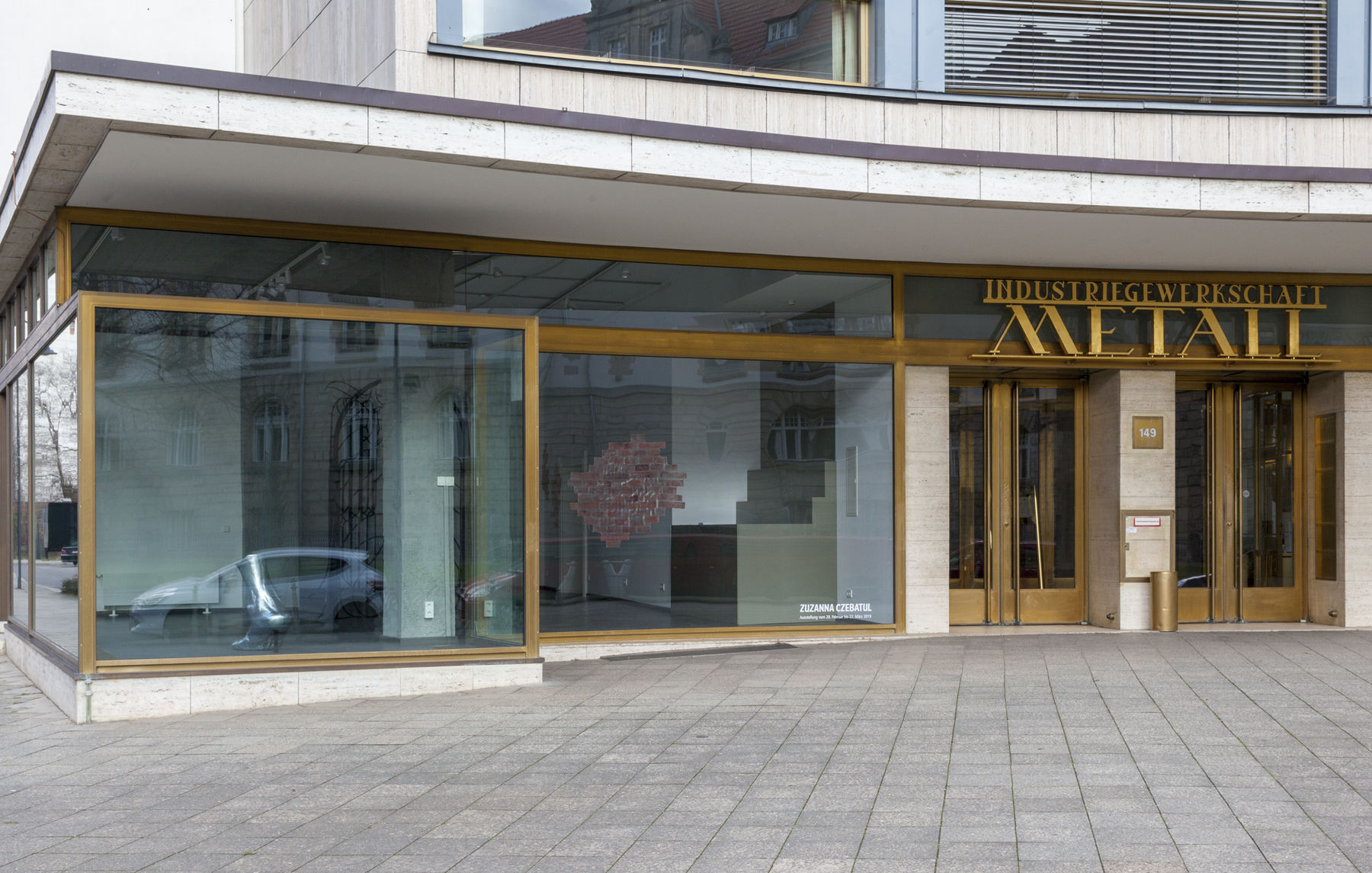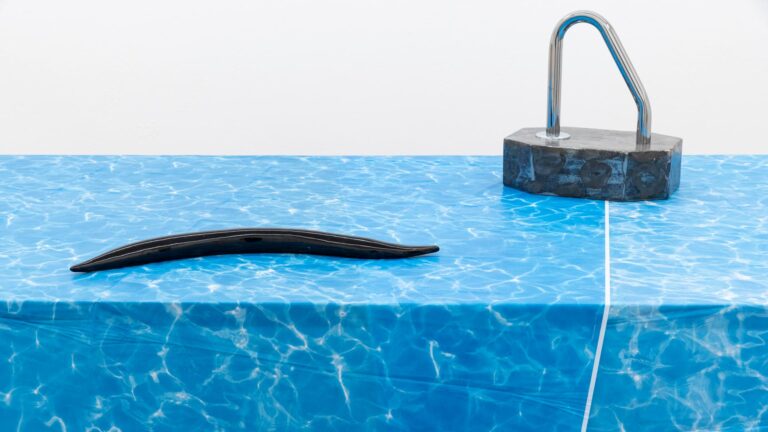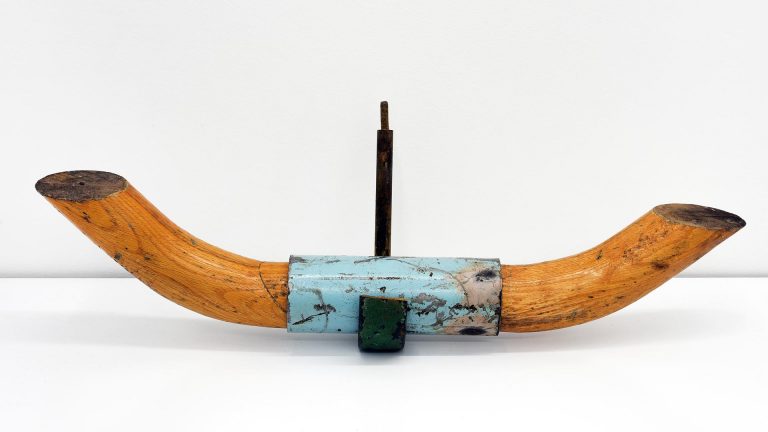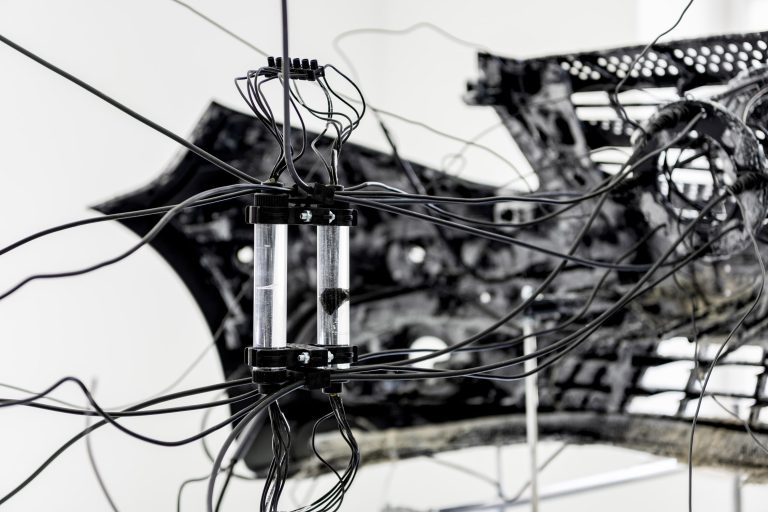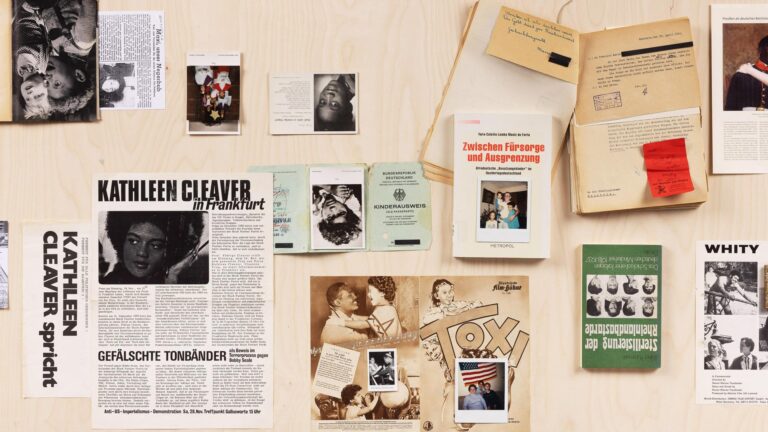Artist: Zuzanna Czebatul
Exhibition title: Whacko In & Loco Out
Curated by: Miriam Bettin
Venue: Haus des Deutschen Metallarbeiterverbandes, Berlin, Germany
Date: February 28 – March 22, 2019
Photography: Linus Müllerschön/ All images copyright and courtesy of the artist
‚This second gate is as open as it closed. Sounds crazy, no? Maybe it’d be better to say it’s neither open nor closed. Though that doesn’t make it any less crazy.’
With the slogan Whacko In & Loco Out, two metal gates welcome visitors—or are they trying to keep us away? Like architectural relics from an unplaceable epoch or a science-fiction set, they put themselves in the way. Are they barriers or entrances? While the two open palms in the work Within Meadows And Rolling Hills (2016) offer a gesture of reconciliation, invitation, and comfort, the second work Psy Away (2019) makes the opposite impression: the grimacing face with its huge teeth and distorted features towers upwards as a horrifying obstacle. Its monstrous yet brutally comical character is drawn from the architectural tradition of grotesques. Somewhere between the carnivalesque and the demonic, it seems less like a gate to heaven than to hell.
The translucent epoxy bricks from the series World in Motion (2018)—originally conceived as a site-specific work for the brick walls of the exhibition space FUTURA in Prague—no longer subtly insert themselves into the environment, but now introduce a new architectural element. Partly adorned with text, these brick casts recall 1990s graffiti on brickwork walls—a motif burned into collective pop-culture memory as a kind of street style through TV, film, and stage sets. The brickwork indoors feels just as out of place as the gateways. But at the same time, their installation suspended in the middle of the room seems to open up new spaces. Both series of works, the brick walls and the metal gates, mark fictive territories that simultaneously lock you in and out.
With Siegfried’s Departure (2018), Czebatul makes use of another element of public space: cast in a guerilla act, the plaster foot, finished with shiny silver car paint, is derived from the monumental Bismarck memorial in the Tiergarten in Berlin. The foot of Siegfried the swordsmith is presented to those passing by IG-Metall-Haus as a symbol of industrial power.
It’s the big sculptural gestures that interest Zuzanna Czebatul (b. 1986): monumental metal portals open up interiors and exteriors, while horizontal, collapsed, and self-entangled obelisks assert themselves in space. Their formal language cites the aesthetics of 1990s club culture, commodity fetishism, and commercialization. In their seductive act of appropriation, her works convey a sense of sexiness, a desire to own, thus showcasing tendencies that are as hedonistic as they are capitalist.
In her solo exhibition at the IG-Metall-Haus, Czebatul’s materials and forms redeploy gender cliches, now exaggerated: her sculptures correspond to stereotypical depictions of virility and masculinity, only to then break with these images of dominance through humor. They thus come to seem like caricatures of themselves. Associations with current political figures and situations lie close at hand. What remains is an impression of weakness and uncertainty in an age of alternative facts. In the context of Germany’s single largest workers’ union, it is an impression that deserves to be read politically.
-Miriam Bettin





